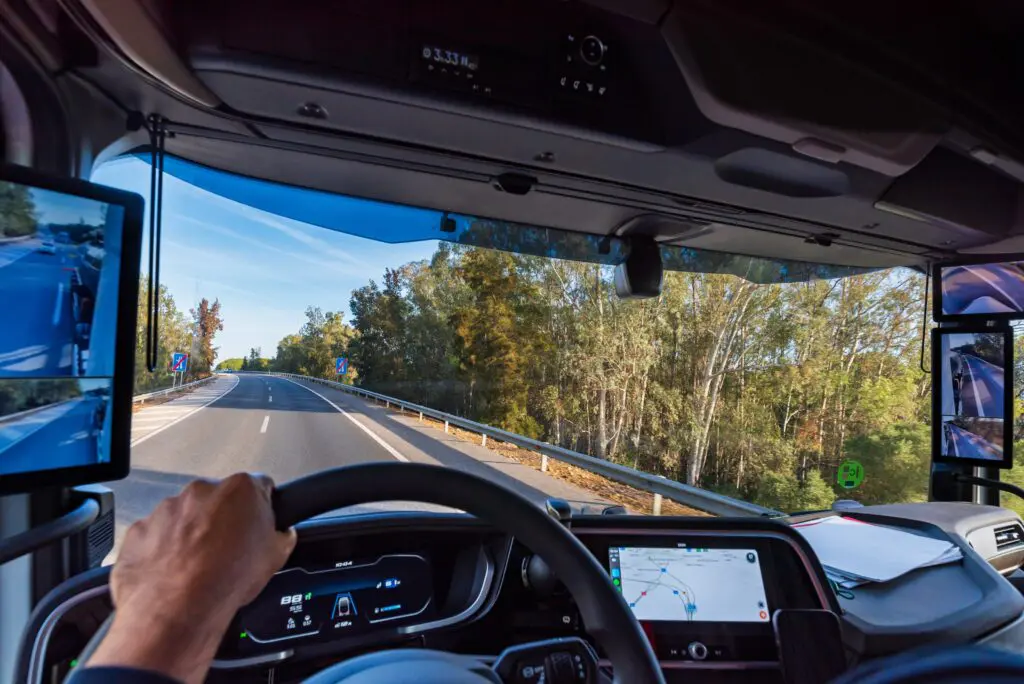When it comes to the Fire and Life Safety industry, technology is constantly evolving. Not just for the equipment technicians must install, service, and maintain, but for the trucks they use to navigate from job to job. Service, delivery, and other logistics companies are installing advanced technology in trucks to determine if their drivers are falling asleep or doing other dangerous things at the wheel. While this is purely for safety and liability/risk management, it’s causing some technicians to feel like they are being micromanaged and leading others to consider changing companies. This blog will explore why taking a technician-first approach is important when implementing new technology and processes.
Fleet Innovations
Installing GPS tracking and monitoring equipment is nothing new and has played a big part in various industries for many years. Back in 2017, WPMT reported on a federal mandate requiring truck drivers to use electronic logging devices (ELDs) to track driving habits. The purpose of the ELDs was to improve accuracy and compliance by recording driving time, but many driver drawbacks occurred from their use. They expressed concerns about being forced to take breaks at inconvenient times, lack of rest stops, traffic issues, and inflexible regulations that don’t account for real-life delays. Even after their protesting efforts, the ELD mandate still went into effect on Dec. 18, 2017.
Since then, the technology for tracking drivers has grown far beyond simple GPS tracking and monitoring. In 2023, Amazon announced they were going to spend $200 million on safety technology across its transportation network. TikTok user @ambergirts later made a post describing the technology, which included:
- 360 Driver-i cameras tracking the sides of the van and inside the cockpit.
- Front camera monitoring proximity to other vehicles and full stops at stop signs.
- AI systems flagging driver behavior such as speeding, distracted driving, and seatbelt usage.
This system directly impacts driver pay based on violations. As much of a struggle for drivers as this technology sounds, Amazon reports they’ve seen a 35% reduction in accident rates. You can watch the full TikTok below.
@ambergirts explaining amazon things ✨ have a great day 🫶🏼 #fyp #trending #amazon #amazondelivery #amazondeliverydriver
♬ original sound – ambergirts
Of course, the debate goes far beyond truckers and delivery drivers. According to Automotive Fleet Magazine, Cintas Corp. started using telematics to monitor drivers in 2012. During its first year, they employed this technology from Inthinc in 1,200 vehicles to monitor driving behavior, decrease speeding events, and increase seat belt use. It also notifies drivers and fleet managers about excessive idling. The results of implementing this technology were so positive that it caused them to start a widespread rollout.
On Aug. 1, 2020, Titan GPS released a Fire Protection Case Study with Fire Protection Inc., a company that sells and services commercial, industrial, and residential fire equipment. Before the study, the company faced issues with fleet vehicles being used for personal reasons. This resulted in additional fuel costs as well as productivity loss. Fire Protection Inc. started with a trial of four vehicles and slowly adopted the system completely. While there was pushback from technicians, a 20% reduction in fuel use occurred due to reduced travel miles, less idling, and better-maintained vehicles. The system also facilitated easier service and maintenance scheduling, timecard verification, improved scheduling and routing, driver behavior monitoring, and even helped recover a stolen vehicle.
Technician-First Approach
Implementing new technology in the Fire and Life Safety industry may benefit the bottom line, but may not necessarily benefit the technicians forced to adapt. That’s why Fire Service Company owners must prioritize the perspective and well-being of technicians as well, not just themselves. The technicians are the backbone of these providers, making sure that equipment is installed, serviced, and maintained properly. Without their buy-in, the transition may not be as smooth as intended.
Technicians most often don’t resist new technologies because of an unwillingness to learn. But because of the increased surveillance, loss of autonomy, and added stress that comes along with it. Addressing these concerns upfront and involving technicians in decision-making can improve productivity, enhance morale, and make them more likely to comply with the implementations.
When Fire Service Providers fail to do this, it might just be that they don’t know how to do this properly. Fortunately, Harvard Business School professor John P. Kotter published an eight-step model for change in his book “Leading Change” in 1995. Kotter International developed it after observing leaders and organizations for over 40 years as they transformed and executed strategies. To apply his model to the Fire and Life Safety industry, consider the following steps:
- Create a Sense of Urgency: Inspire people to adapt to new technological advancements and work toward a future of improved safety and efficiency.
- Build a Guiding Coalition: Assemble a team of leaders and technicians who support the change to guide it, coordinate it, and communicate its activities.
- Form a Strategic Vision: Craft a clear vision outlining the new technology’s benefits and how things will be different for everyone involved.
- Enlist a Volunteer Army: Make sure there are massive numbers of people rallying around the new technology and wanting to contribute actively.
- Enable Action By Removing Barriers: Provide the necessary tools and training to adapt to the new technology, so there’s nothing to slow down progress.
- Generate Short-Term Wins: Recognize, collect, and communicate small successes to track progress and build momentum among volunteers.
- Sustain Acceleration: Use the momentum from early wins to improve systems, structures, and policies until the vision is a reality.
- Institute Change: Articulate the connection between instituting new fleet technology and organizational success while continuously evaluating systems and processes to ensure management practices reinforce your technological investments.
Conclusion
Adopting a technician-first approach is essential for successfully implementing new technology and other measures in the Fire and Life Safety industry. By developing a clear change-management plan, business leaders can ensure a smoother transition, higher productivity, and enhanced job satisfaction. Ultimately, this will create a positive work environment for field technicians and company leaders.
Image via Shutterstock.


